by Lisa Cooke | May 13, 2017 | 01 What's New, FamilySearch, Research Skills |
I have thoroughly enjoyed having Amie Tennant as a blogger for the past year. In her final blog post for Genealogy Gems she takes us on a tour of her home state’s digital records. Then she will be turning all of her attentions to her own genealogical certification. Thank you Amie for all of your helpful and thoroughly enjoyable posts! – Lisa Louise Cooke
Ohio genealogy research goes digital. You can now virtually walk into any courthouse in Ohio with the click of the mouse. Check out the amazing browse-only databases at FamilySearch for Ohio and other states, and take your family history research to the next level.
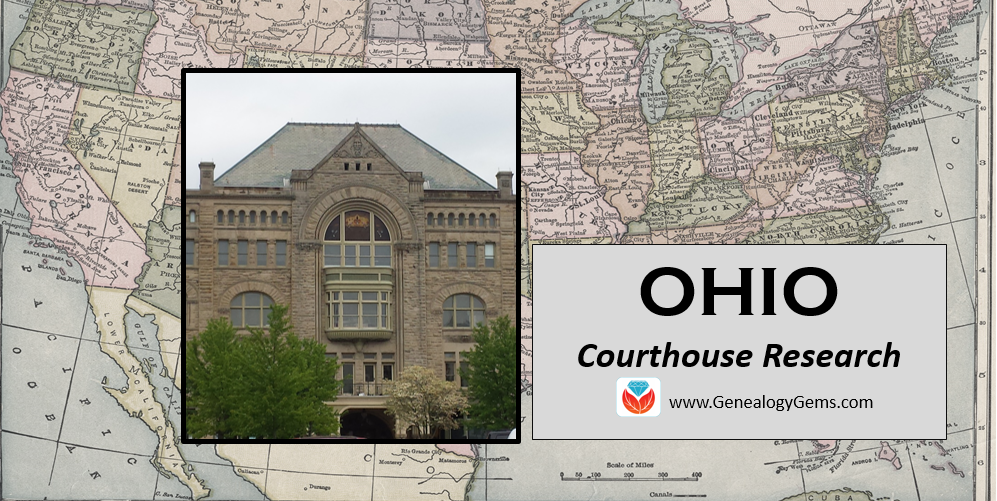
I use FamilySearch.org to search courthouse record books all the time. In particular, the Ohio Probate Records, 1789-1996 now have nearly 7 million digital images of county record books such as wills, estate files, guardianship records, naturalization records, minutes, bonds, and settlements. In fact, many other states have their court record books online at FamilySearch, too. So, why haven’t you noticed before?
Browse-only Databases vs. Indexed Databases
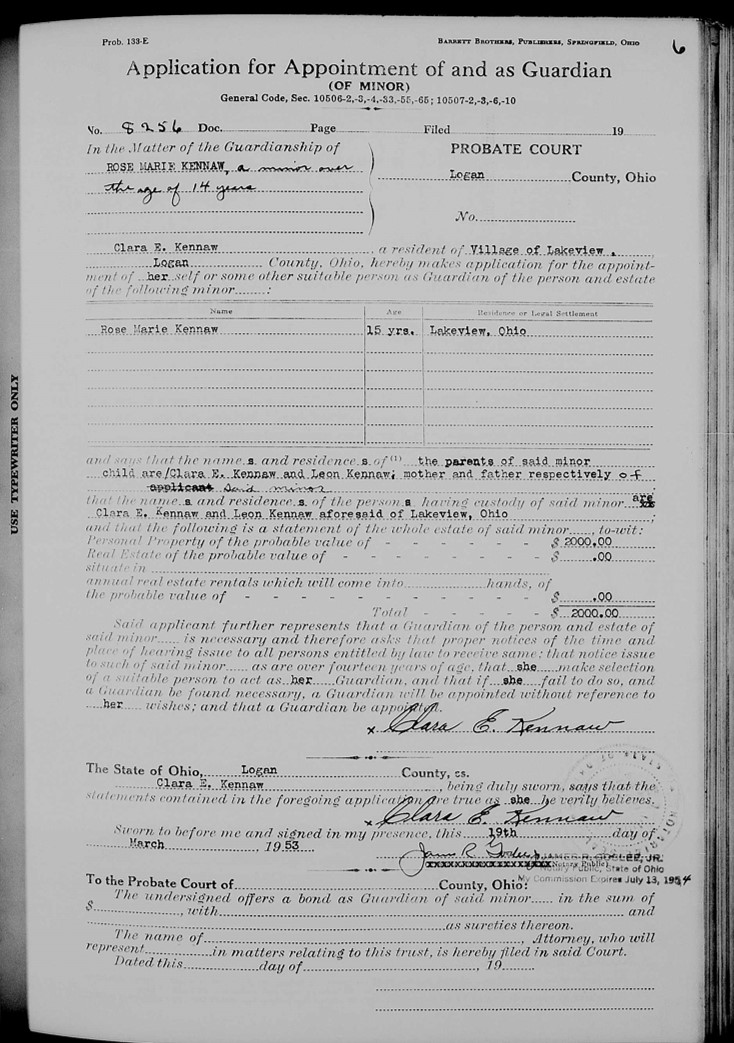 You may have read our previous post on step-by-step instructions to using browse-only databases at FamilySearch. If you didn’t, you should know that when you are searching for records at FamilySearch using the traditional search fields, you are only searching for records that have been indexed. In other words, there may be thousands of records you need on the site, but you won’t find them. They have not been indexed by a searchable name, place, or date. Instead, you need to go in the virtual “back door.”
You may have read our previous post on step-by-step instructions to using browse-only databases at FamilySearch. If you didn’t, you should know that when you are searching for records at FamilySearch using the traditional search fields, you are only searching for records that have been indexed. In other words, there may be thousands of records you need on the site, but you won’t find them. They have not been indexed by a searchable name, place, or date. Instead, you need to go in the virtual “back door.”
Step 1: First, go to FamilySearch and sign in. Next, click Search at the top right. Now you will see a map of the world. Click on the desired location. I have chosen the U.S., but you can choose any country you are interested in.
Step 2: Once you choose your desired country or continent, a pop-up list will be available and allow you to choose the state (or country) you wish to search in. In this case, a list of the U.S. states appears and I clicked on Ohio.
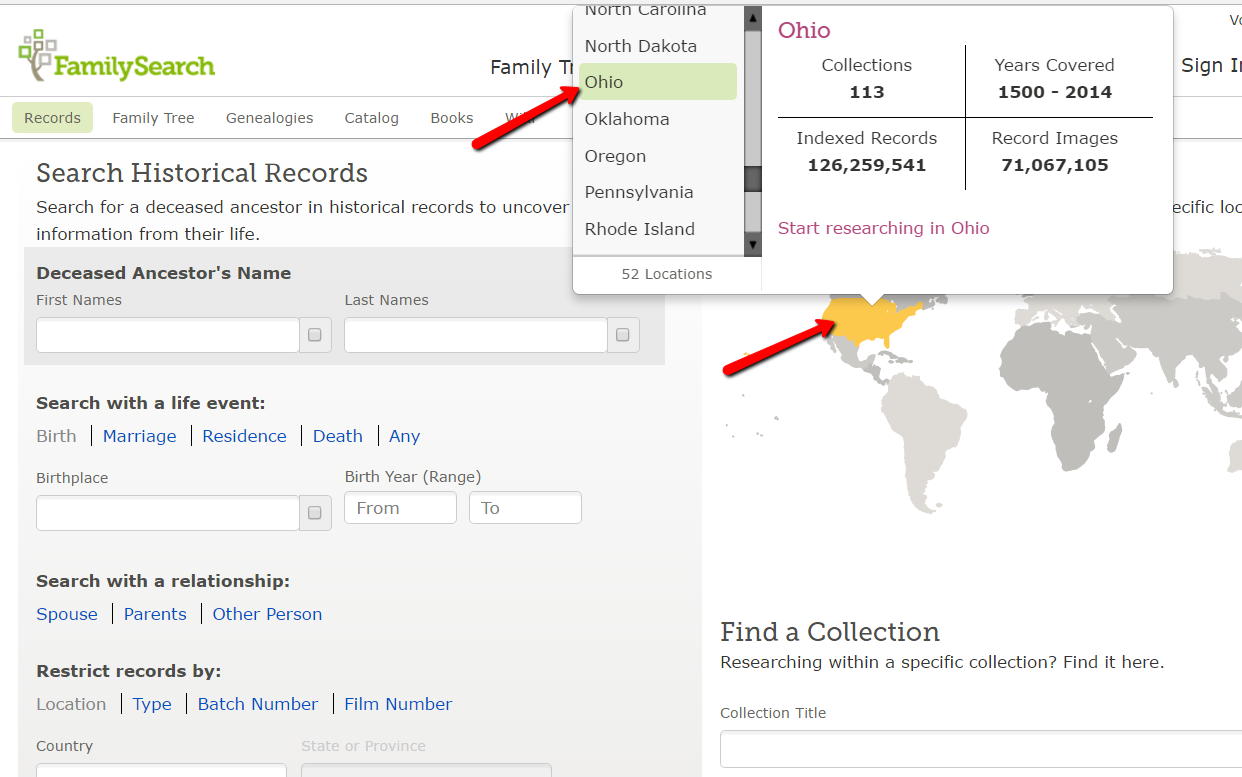
Step 3: The system will direct you to a new page. You will first see the Ohio Indexed Historical Records. These are the records and collections that have been indexed and are searchable by name, date, and place. Though these are great, they are not the record collections I want to share with you today.
Instead, scroll down until you see the heading Ohio Image Only Historical Records. You will notice several databases such as cemetery records, church records, naturalization records, etc. All of these are browseable. That means you will use them like you would microfilm.
Step 4: I want to bring your attention to a specific record collection, so scroll down even further until you see Ohio Probate Records, 1789-1996. Click it.
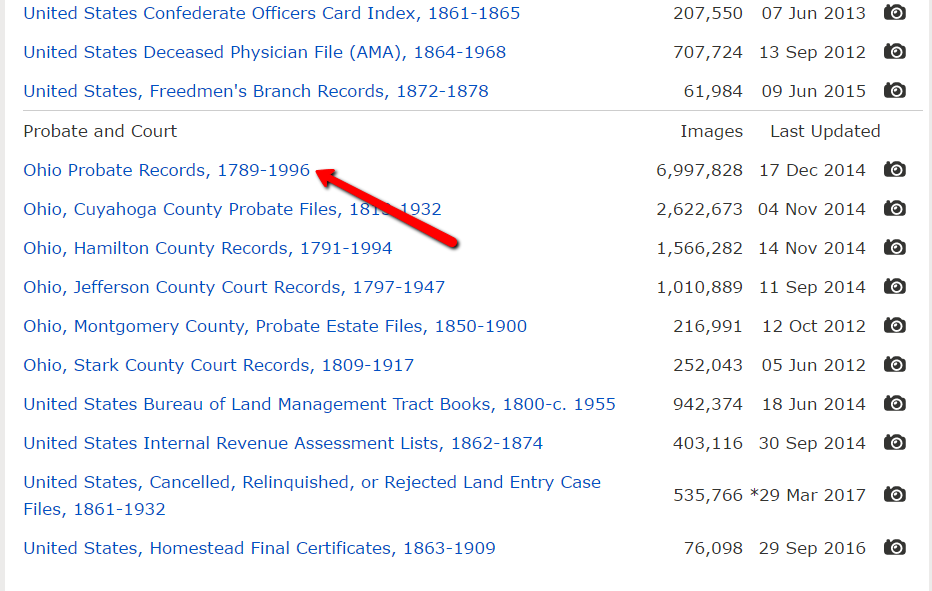
At the next screen, you will see you can browse the 6,997,828 Ohio probate records and you are probably thinking, “What!? I can’t possibly browse through nearly 7 million records!” But, you can, so go ahead and click it!
Step 5: At the new screen, you will see everything is broken up into counties. Click on the county you are interested in researching. You will next see a list of possible record books available for that county. Each county will vary, so where you may find guardianship records available in one county, you might not find them in another.
Ohio Genealogy Research at the Courthouse
As a refresher, courthouse research is often imperative to thorough genealogy research. Here is a helpful chart of the type of information you may find in these types of court records. Be sure to remember: records and the amount of information they contain change over time.
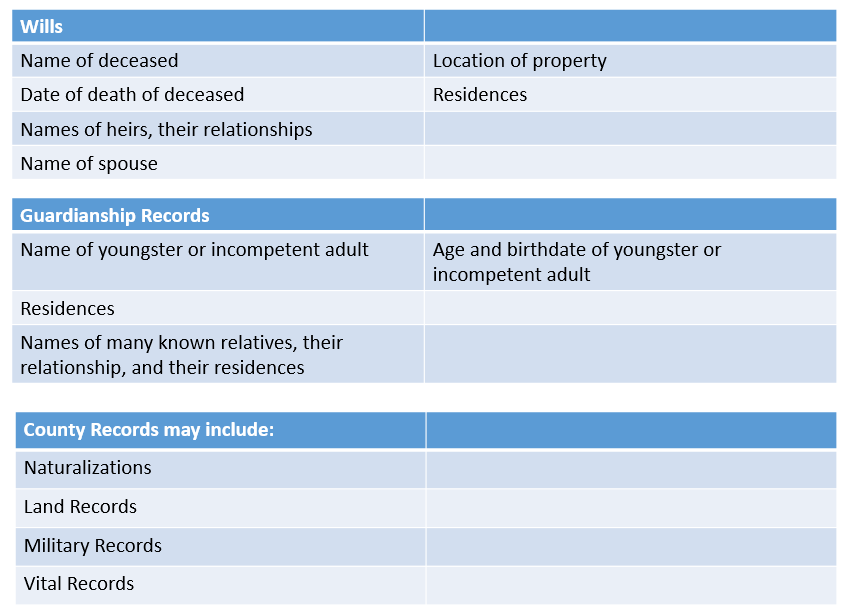
More on Courthouse Research Techniques
Are you looking to understand the value of courthouse research and how to use those records to overcome brick walls in your family tree? Read 4 Ways to Power Up Your Courthouse Research Skills from our own Sunny Morton.
by Lisa Cooke | Dec 14, 2019 | 01 What's New, Church |
Finding church marriage records may not be as easy as finding civil marriage records. I’ve invited genealogist Sunny Morton to share her best strategies for finding U.S. church marriage records from her new book How to Find Your Family History in U.S. Church Records: A Genealogist’s Guide.
Strategies for Finding U.S. Church Marriage Records
Marriage records are part of that genealogy trinity of U.S. vital records. In addition to documenting the wedding, marriage records may also serve up the equivalent of genealogical party favors, such as the birth dates, birthplaces and sometimes even parents’ names of the bride and groom.
Civil or government records are generally the first ones we turn to in the United States. These types of records are commonly referred to as “vital records,” since they document important events in a person’s life like birth, marriage, and death.
Civil marriage records can be fairly easy to find and access. However, that’s not always the case. There may be times you can’t obtain a civil marriage record. If you do find it, it may not include all the information you were hoping for. And sometimes you’d just like to find more corroborating evidence or additional clues about their lives. That’s when it’s a good idea to turn to church marriage records.
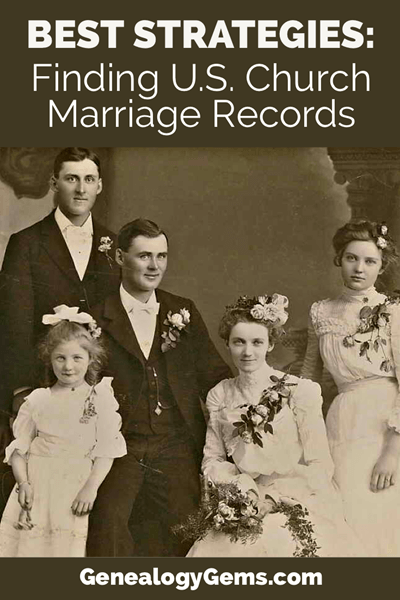
Though not all of our U.S. ancestors were married in a church or by a member of the clergy, many of them were, so church marriage records may exist.
In general, finding U.S. church records is a two-step process:
1. identify the right church
2. then find its records.
However, this may actually involve a few additional steps.
I’m going to share with you the steps and strategies of this process from my new book How to Find Your Family History in U.S. Church Records: A Genealogist’s Guide. Along the way we’ll see how they apply to a real genealogy case that resulted in success.
Step 1: Identify the Church of Your Ancestor
Identifying the church in which an ancestor married is key to locating any surviving record of it.
Let me give you the first and most important tip: the answer may be sitting under your nose.
What do I mean by that? Start by looking carefully back through other records you already have about the bride or groom. These types of records include obituaries, oral histories, county histories, tombstones, etc. Do they mention a church affiliation?
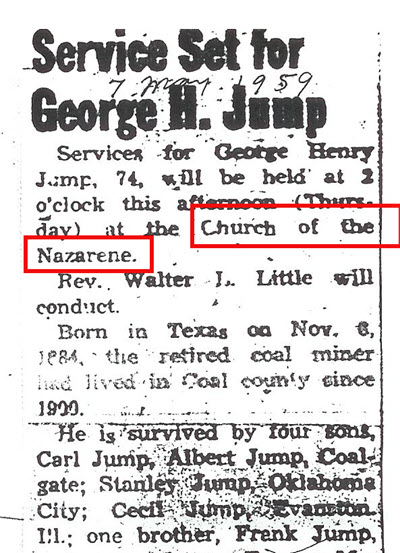
Example for Lisa’s family history
Even if they don’t mention a church, perhaps one of these records can give you a clue.
For example, let’s say the husband’s obituary mentions his lifelong religious affiliation, like Methodist or Catholic or Baptist, but not the name of the local congregation. My book offers several detailed strategies for tracking down the church name, but here’s one of the most helpful: Look at city directories, histories or maps from that time period to identify nearby churches of that denomination. Keep in mind that before the age of the automobile, people couldn’t travel far to attend church.
Let’s say you find both Irish and German Catholic parishes in the area. Based on what you already know about your family, with which did they likely affiliate?
If you’ve got the civil marriage record, look at the name of the officiator. Do you see a title hinting that this was a minister, such as “Rev” (short for Reverend)? (As an FYI, the initials “J.P.” stand for Justice of the Peace, a civil office.)
Occasionally you may even see the denomination written right in the record, as it is in the Colorado civil marriage record of Mike Fox and Mary Eiarrman:

Colorado civil marriage record of Mike Fox and Mary Eiarrman
Most marriage certificates don’t state a minister’s affiliation but searching with Google may be able to help you with that.
For example, the Indiana marriage certificate for another ancestral couple of mine identifies the officiator as “S.B. Falkenberg, Minister.” Googling that name, along with the keywords church and Indiana, led me to online books that identified him as a Methodist.
Additional digging revealed that “Somers B. Falkenburg”—probably the same guy—was specifically assigned to the Rushville Circuit of the Southeast Indiana Conference of the Methodist Episcopal Church in 1860. This was around the time and place I’m looking for that 1861 marriage record. (Learn to do this kind of digging yourself from my book. See Chapter 14 Methodist.)
Step 2: Find Where the Church Records are Located
Once you’ve identified the church, it’s time to search for congregational records that may document the marriage.
Your strategy may vary, depending on the denomination, the time and the place. Again, my book can help you: there’s a chapter with general strategies for finding church records and there are specific chapters on various denominations. Here are some get-started strategies.
Googling the Church
Find out whether the church still exists by googling the church name and location or using the online congregational locator tools I mention in the various denominational chapters.
If the church still exists, you’ll likely find a website, Facebook page, or other contact information. Reach out to their office and ask about their old records.
If you can’t find the church online, it may have closed, merged with another church, or been renamed.
Contact the Church Organization
You might turn to regional church offices or archives, such as those of a Catholic diocese or Methodist conference, to see whether they can tell you anything about that church or its records.
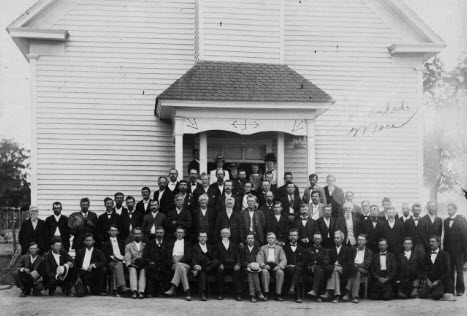
Each denomination has a different organizational structure. (See the 12 different denominational chapters in Part 2 of my book.)
An Example Search

Searching for church directories
Remember that 1889 civil marriage record for Mike Fox and Mary Eiarrman I showed you previously? Let’s take a look at the process I used to find their church marriage record.
Since the civil marriage record told me that the officiator Godfrey Raeber was a Catholic priest, I turned to the annual Catholic Directory for that year to see what parish (local congregation) he was assigned to.
I googled catholic directory 1889 and found that year’s edition online at HathiTrust Digital Archive.
Keyword-searching within the directory for Raeber didn’t bring up any results, but I didn’t stop there. I paged through it until I found the listing for the diocese of Denver (it is now an Archdiocese).
I found the priest listed at St. Ann’s, but his surname was spelled a little differently, which is why I couldn’t find him with that keyword search:

Immediately, I googled St. Ann’s Catholic Church in Denver, Colorado. Nothing came up. So, I googled Denver Catholic diocese archive and found the archdiocesan archivist’s contact information. I called him and asked what he could tell me about St. Ann’s parish and its records. The parish had closed, he said, and he had the records right there. What did I need?
Hooray! I mailed him a check and emailed him the specifics of my request. He sent me back a copy of Mike and Mary’s entry line in the marriage register:
In case you can’t read it easily, the entry references their marriage on the 28th (the month and year, in preceding columns, are “ditto-marked” the same as the entry above it, which I can’t see, but I have the date already from the civil marriage record). Then Mike Fox’s name appears, age 23, “1” for his first marriage, Denver residence, son of Martin & Francis, born in Germany.


Similar information appears for Mary, the bride, though her surname is mostly illegible. These details (age, parents’ names, birthplace) were what I hoped to learn when I originally ordered the civil marriage record—but it’s not there. Only by taking the extra steps to find the church marriage record did I uncover these additional details.
I’m still looking for a Methodist record of that marriage recorded by S.B. Falkenberg. I’m guessing his was a traveling assignment covering many small towns, which means his own personal log book may have been the only place he would have created a record, if indeed he did. The records of itinerant ministers are not easy to find.
The Search for Church Marriage Records Can Lead to More Gems
It’s true that you won’t always find church records of ancestors’ marriages or other life events such as births, baptisms, deaths or burials.
Sometimes the records weren’t created; for example, Baptists didn’t generally record marriages, as they weren’t considered a religious rite.
Or perhaps membership records have been destroyed or lost.
Occasionally, you’ll track down the records only to find they aren’t accessible to researchers. That’s sometimes true for Catholic sacramental records, which are confidential—though many church or archive offices will release copies or transcriptions of older records.
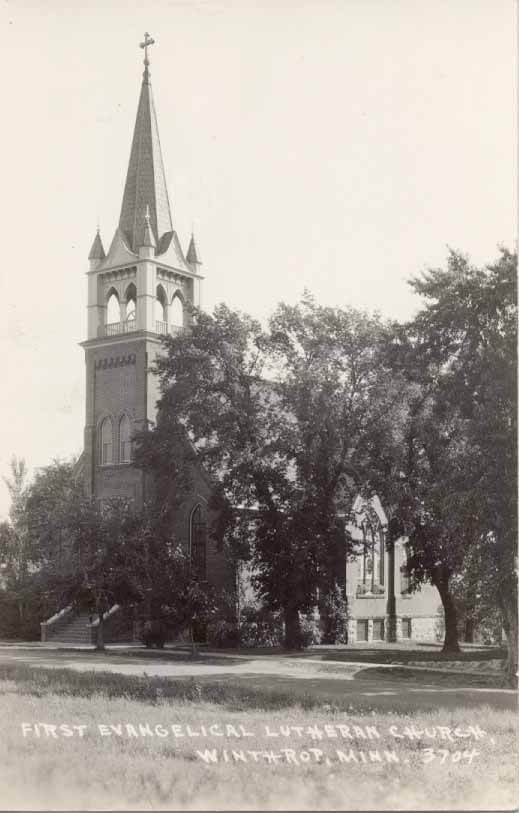
But while following the process for church records, you may discover other gems that can add color to your family history stories.
For example, when I was looking for Catholic parish records in Olyphant, Pennsylvania, I found a short history of the church. It described the devotion of its earliest members, who raised the funds to erect their building and even helped dig its foundations. Though I can’t prove it, I have reason to believe this family was part of that devoted group.
Other times, you may find photos, directories, reminiscences or other records that give you a glimpse of your ancestors’ church community life.
A Genealogist’s Guide to Finding Church Records
While the 2-step process for finding church marriage records is straight-forward, each case requires unique resources. In How to Find Your Family History in U.S. Church Records: A Genealogist’s Guide which I wrote with Harold Henderson, CG lays out a plethora of specific resources for the major Christian denominations in the U.S. before 1900:
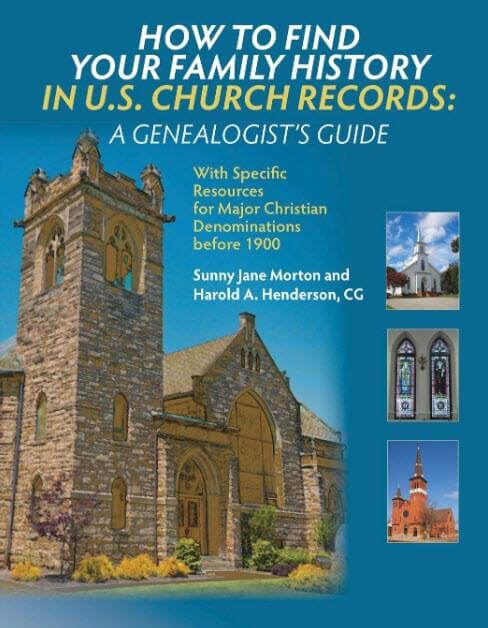 • Amish,
• Amish,
• Anglican,
• Baptist,
• Congregational,
• Dutch Reformed,
• Latter-day Saint,
• Lutheran,
• Mennonite,
• Methodist,
• Quaker,
• Presbyterian,
• Roman Catholic,
• and various German churches.
More than 30 archivists, historians, and genealogical experts in specific faith traditions have contributed their knowledge to the book.
Church records won’t always be your genealogical salvation, but every so often—hallelujah!—they will prove to be your saving grace.
About the Author
Sunny Morton (along with Harold A. Henderson, CG) is the author of the books How to Find Your Family History in U.S. Church Records: A Genealogist’s Guide, and My Life & Times: A Guided Journal for Collecting Your Stories. She is also a contributing editor to Family Tree Magazine.
(Disclosure: Genealogy Gems is a participant in the Amazon Services LLC Associates Program, an affiliate advertising program designed to provide a means for sites to earn advertising fees by advertising and linking to Amazon.com. Thank you for supporting articles like these by using our link.)
by Lisa Cooke | Sep 1, 2019 | 01 What's New, Records & databases
Here are the latest genealogy records newly online from Findmypast. You’ll find a large selection from Scotland, and others from around the world.
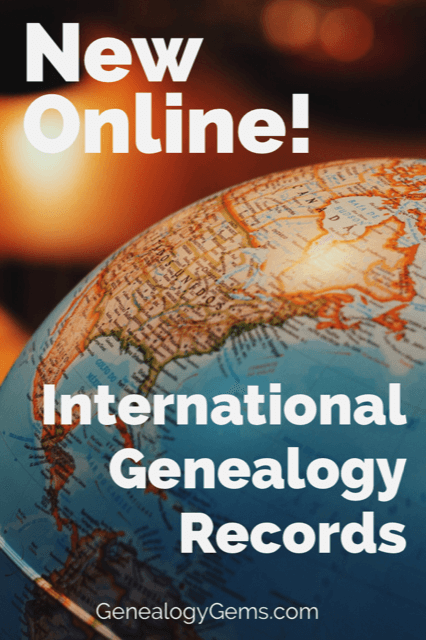
Scotland, Published Family Histories
Is your family from Scotland? Discover more about your Scottish families’ name and history from this collection of publications. There are over 400 publications in this collection of Scottish family histories.
The publications mostly date from the 19th and early 20th centuries, they include memoirs, genealogies, and clan histories. There are also publications that have been produced by emigrant families.
Scotland, Newspaper Birth Notices
Over 121,000 new records have been added to our collection of Scottish newspaper birth notices. These new additions have been transcribed from our existing collection of Scottish newspapers.
Each record includes a transcript and an image of the original newspaper announcement. The amount of information listed varies, but most records will list a combination of your ancestor’s birth date, birth place and parents’ names.
Scotland, Newspaper Marriage & Anniversary Notices
A further 201,000 new records have also been added to our notices of marriages and anniversaries.
Also taken from our existing collection of historical newspapers, the records will include a combination of your ancestor’s marriage date, marriage place, spouse’s name and parents’ names. Images of the original notices may reveal additional details.
Scotland, Newspaper Death Reports & Obituaries
Over 500,000 additional records are now available to search. This collection of newspaper death reports and obituaries may reveal interesting or undiscovered stories surrounding your ancestors’ life and death.
Transcripts will reveal your ancestor’s death date, age at death, parents’ names and the name of their spouse.
Scotland, Glasgow & Lanarkshire Death & Burial Index
Over 37,000 records have been added to the Glasgow & Lanarkshire Death & Burial Index. These new additions cover Bent Cemetery in Hamilton and consist of transcripts of original documents that will reveal a combination of your ancestors’ birth year, death and burial dates, age at death, burial place and mortcloth price.
Scotland, Court & Criminal Database
Over 28,000 records from the Fife Kalendar of Convicts have been added to our collection of Scottish crime records.
The result of a 20 year project by Andrew Campbell of the Fife Family History Society, the Kalendar is an indexing to many of the courts in Fife as well as the High Court between 1708 and 1909. It includes information taken from a variety of sources ranging from court, prison and transportation records to births, marriages, deaths and newspaper reports.
Each result will include a transcript of the original document. The amount of information listed in each transcript will vary, but most will reveal a combination of the accused’s name, birth year, birth place, address and occupation, the nature of their offence, the date and location of their trail as well as the sentence they received.
Some records will also include trial notes, verdict comments, details of previous convictions and additional comments.
The Scotland, Court & Criminal Database now contains over 160,000 including Crown Office Precognitions and High Court Trial Papers. Crown Office Precognitions are factual statements that have been given by witnesses to both the prosecution and defence before the case goes to trial. Precognitions differ from a witness statement, a witness statement is an account of what the witness has said or seen were as a precognition is an account of the witness’s evidence.
Church of Scotland Ministers 1560-1949
Explore PDF images of the “The Succession of Ministers on the Church of Scotland from the Reformation”. Compiled by Hew Scott, D.D., The work was revised and continued up to 1949 under the Superintendence of a Committee appointed by the General Assembly.
As quoted in the book, “the design of the present work is to present a comprehensive account of the Succession of Ministers of the Church of Scotland since the period of the Reformation. An attempt is made to give some additional interest by furnishing incidental notices of their lives, writings and families, which may prove useful to the Biographer, the Genealogist, and the Historian.”
Isle of Man Roll Of Honour WW1
Find your Isle of Man ancestors who fell in the Great War. The Isle Of Man Roll Of Honour recorded the names of more than 1,900 men who died during the First World War or died as a result of wounds, injury or disease contracted on active service. These transcripts will reveal your ancestor’s rank, regiment, parish and biography.
Originally published in 1934 by the War Pensions Committee, the publication was funded entirely by Lord Stanley, Earl of Derby.
In 1936, the War Pensions Committee donated copies to each parish church throughout the island.
The foreword, provided by Lord Stanley, reads ‘It is well that the deeds of those who died in the Great War should find a permanent memorial in such a list. Whilst this generation lives their names will not be forgotten, but other generations will arise to whom they will not be personally known. This Roll will serve to keep their memory green and future Manxmen and Manxwomen, when reading it, will realise that in our great struggle the Isle of Man played a noble part’.
International Records Update – Czech Republic
Two new Indexes, Czech Republic Births & Baptisms 1637-1889 and Czech Republic Marriages 1654-1889 are now available to search. These transcripts will provide you with vital dates and locations as well as the names of parents and spouses. Hints will also be generated from these records against any matching names stored in your Findmypast family tree.
International Records Update – Belgium
Celebrate Belgian Independence Day this coming Sunday by discovering your Belgian roots. Explore two indexes, Belgium Marriages 1563-1890 and Belgium Deaths & Burials 1564-1900, containing more than 212,000 records.
These records will enable you to determine when your ancestors died, where they were laid to rest, when they married and the name of their spouse.
International records update – Finland
Search for your Finnish ancestors in three indexes of more than six million baptisms, marriages and burials between 1657 and 1909. These transcripts will also generate hints against any names stored in your Findmypast Family Tree.
Pinpoint your ancestor’s final resting place with new additions to our Billion Graves Cemetery Indexes. Our latest update includes:
Cemetery records are of great importance in discovering where and when your ancestor died. They can also provide you with information regarding their birth and marriage dates.
With an abundance of cemeteries, it can be overwhelming trying to pinpoint the precise cemetery in which your ancestor was laid to rest, and visiting each potential location is costly. However, in partnering with BillionGraves, we aim to make available all the cemetery records held on their site for free, saving you time and money as you search for your ancestor. BillionGraves is the largest resource for GPS-tagged headstone and burial records on the web, with over 12 million headstone records.
International Records Update – Netherlands
Unearth your Dutch roots with three indexes to more than three million births & baptisms, marriages, deaths and burials that took place in the Netherlands between 1564 and 1945.
These transcripts were sourced from the International Genealogical Index and will generate hints against your Findmypast family tree.
Disclosure: This article contains affiliate links and Genealogy Gems will be compensated if you make a purchase after clicking on these links (at no additional cost to you). Thank you for supporting Genealogy Gems!

 You may have read our previous post on step-by-step instructions to using browse-only databases at FamilySearch. If you didn’t, you should know that when you are searching for records at FamilySearch using the traditional search fields, you are only searching for records that have been indexed. In other words, there may be thousands of records you need on the site, but you won’t find them. They have not been indexed by a searchable name, place, or date. Instead, you need to go in the virtual “back door.”
You may have read our previous post on step-by-step instructions to using browse-only databases at FamilySearch. If you didn’t, you should know that when you are searching for records at FamilySearch using the traditional search fields, you are only searching for records that have been indexed. In other words, there may be thousands of records you need on the site, but you won’t find them. They have not been indexed by a searchable name, place, or date. Instead, you need to go in the virtual “back door.”












 • Amish,
• Amish,